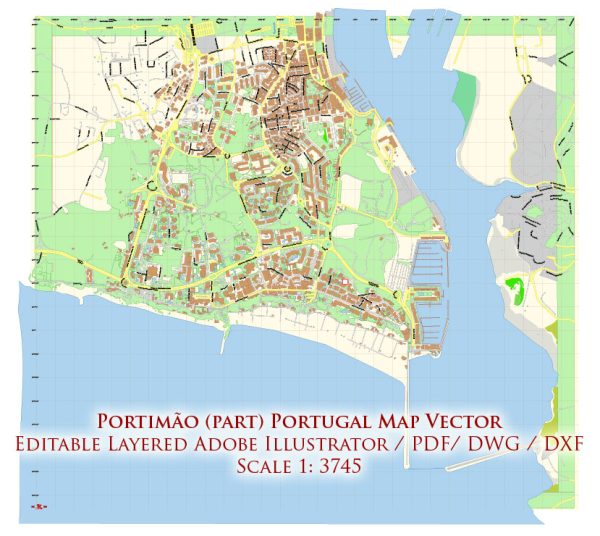Portimão, located in the Algarve region of Portugal, has a rich history that spans centuries. The city has undergone significant urban development, shaped by its strategic location, economic activities, and cultural influences. While the following overview provides a general sense of Portimão’s historical urban development, it’s important to note that the details may vary, and there could be additional nuances to explore.
- Ancient Times: Portimão’s history dates back to ancient times when it was likely inhabited by various civilizations, including the Phoenicians and Romans. The region’s proximity to the sea made it attractive for trade, fishing, and maritime activities.
- Medieval Period: During the medieval period, Portimão was part of the Islamic caliphate until it was reconquered by Christian forces in the 13th century. The area underwent significant changes as it became integrated into the Kingdom of Portugal.
- Maritime Importance: Portimão’s development was closely tied to its maritime activities. The city’s location along the coast facilitated trade, and its harbor became a vital hub for shipping and commerce. Fishing also played a crucial role in the local economy.
- Fortifications and Defense: Like many coastal towns, Portimão faced threats from pirates and other invaders. As a response, various fortifications were built over the centuries to defend the city. Fortresses and defensive walls were constructed to protect against external threats.
- Renaissance and Baroque Influence: The Renaissance and Baroque periods left their architectural imprint on Portimão. Churches, squares, and public buildings were constructed in styles characteristic of these periods. These structures often reflected both religious and civic importance.
- Industrialization and Modernization: The 19th century marked a period of industrialization and modernization. The city’s infrastructure was improved, and new industries emerged. The expansion of transportation networks, including railways and roads, further connected Portimão to the wider region.
- Tourism Boom: In the latter half of the 20th century and into the 21st century, Portimão experienced a significant boom in tourism. The city’s beaches, such as Praia da Rocha, became popular destinations, leading to the development of hotels, resorts, and other tourism-related infrastructure.
- Contemporary Urban Development: Portimão continues to evolve, with ongoing urban development projects shaping the city’s landscape. The balance between preserving historical landmarks and accommodating modern needs remains a consideration as the city adapts to changing times.
Overall, Portimão’s history of urban development is a complex tapestry that weaves together influences from various cultures, economic activities, and historical events. Exploring the city reveals layers of history that contribute to its unique character and charm.


 Author: Kirill Shrayber, Ph.D.
Author: Kirill Shrayber, Ph.D.